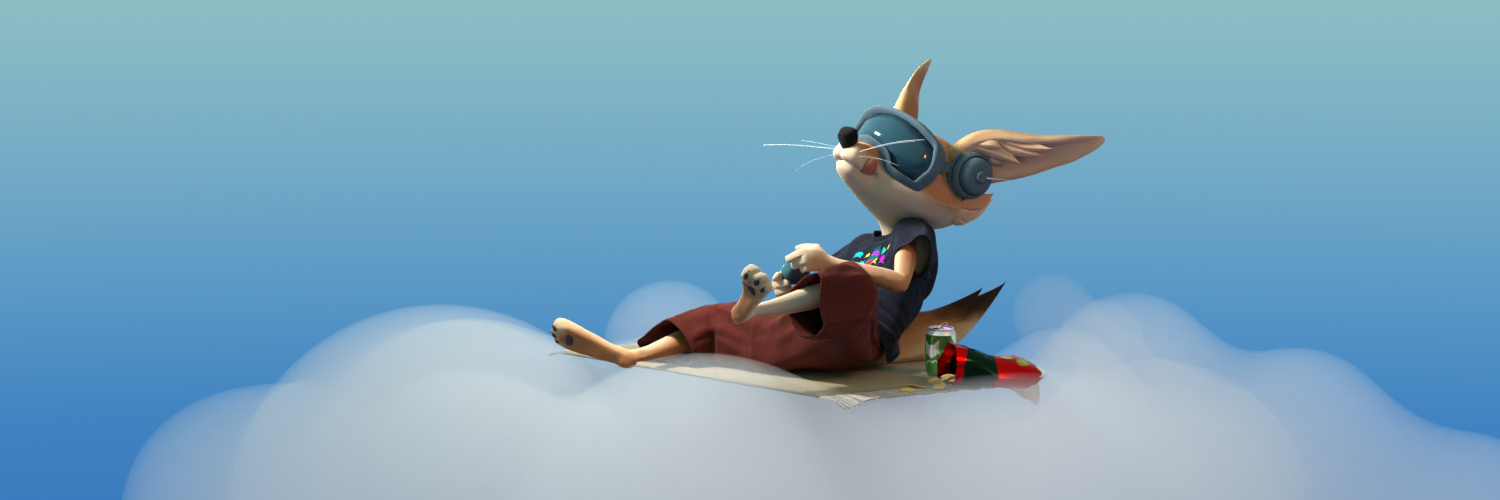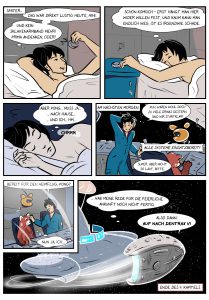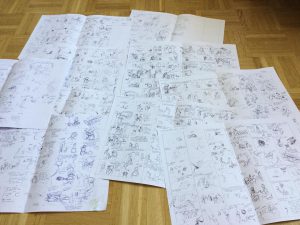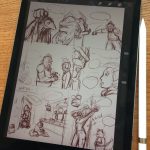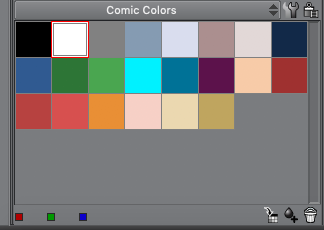A major milestone: chapter four of my comic “Clara & Pong” is done – 72 pages into the storyline. If you can read German, please head over to clarapong.com to check it out!
Before moving on to drawing the final chapter, I thought it might be interesting to share some details about my process. Since this is – especially for a relative beginner like me – a massive project, with around 100 pages, running already for more than two years – it’s pretty important to me to have a smooth workflow.
Story pipeline
It all starts with the script in text form. The major lesson I learned: Know where you’re going! I did have the major story points in mind from the beginning, and that helped me tremendously in keeping the story together. Mind you, I didn’t have all details fleshed out before starting to draw, but I could always be certain I wouldn’t draw myself into a corner.
I guess the “Right Way” to do this would have been:
- write the script
- draw the storyboard
- layout the pages
- render the pages
In my case, it turned out to work best incrementally, in overlapping “pipeline stages” with three tracks:
- detailed script, chapter by chapter
- storyboard, scene by scene, feeding from finished script parts
- layout, page by page, feeding from finished storyboard panels
So, I finished the script first, the storyboard later (just a few weeks ago), and by now am conveniently pulling off panels from the storyboard, assembling pages (obviously, I’ll make corrections and put in new ideas all the time, but so far I never had to go back and change major parts of the story).
The storyboard
The only non-digital part of the pipeline 🙂 I draw my storyboard on big sheets of paper, in a 6×6 grid. The drawings are just barely enough to show what’s happening in each panel, so I get the sequence down. (The picture only shows chapters 3 to 5 – before, I didn’t have a consistent approach.)
Layout & scribbles
Picking panels from the storyboard sheet, I assemble the layout for the next page. Usually I try to end each page with a transition into the next page – a smaller or larger cliffhanger, if you will. For layout and scribbling, I use my iPad Pro, moving stuff around and drawing in layers until I’m happy enough to move on to inking. Important: Make sure there’s enough space for the text!
Inking & text
Next, I transfer the scribble to the PC (a Mac, in my case), where I import it into ClipStudio Paint, as a background image layer. My template already has two vector layers for foreground and background lines. Dividing the page up into panels gives me separate folders for each panel. The image on the left shows the layer setup of the finished page.
I love drawing in vectors, because it allows for easy corrections of shapes. When I’m done, I usually go over all the lines and adjust line weights to keep them consistent across the page.
After adding text and drawing the balloons around it, I move on to coloring the page.
Coloring
Here, I usually work on just one foreground and one background color layer for the whole page. I select all the frame folders, and choose “combine”, which results in a new folder masking out all the frame border areas of the page. I place my two color layers in that folder.
My coloring style is very simple, so I typically can just fill areas with flat colors. I restrict myself to a fixed color palette – which I did carefully extend over the first few chapters, but has now become very stable. Most importantly, it contains bright and dark values in warm and cool grays, plus the essential colors for my characters. A palette like this is really helpful for keeping things consistent and efficient.
… and done
Upload the page to the my website, announce it on FB, and that’s it, really. It’s all working pretty smooth and painless by now, so I can keep my pace of doing one page a week. With the completed storyboard, I now know how many pages are lying ahead, so projections show it’s quite possible to finish by the end of the year. Yay!
